There’s art, and there’s science. But is there art in science or science in art? The Getty, one of the world's largest cultural and philanthropic institutions dedicated to the visual arts, is banking on it to the tune of $20 million in their support of the most current edition of Southern California’s landmark arts event, PST ART (previously Pacific Standard Time).
PST ART has returned this year with more than 800 artists, 70 exhibitions and one theme: “Art & Science Collide.” Although not Latino-focused like 2017’s “PST: LA/LA,” an exploration of Latin American and Latino art in dialogue with Los Angeles, this year’s edition features an eclectic array of Latino-themed exhibitions and programming taking place in museums and galleries throughout the region. A curandera, nopales, art electronics and environmental disparities in Vernon and Willowbrook are just some of the topics covered in these thought-provoking exhibitions. Some of these institutions have also scheduled workshops, musical events, discussions, and more programming. ¡Nos vemos!
Pro tip: Some of the museums have admission fees, others don't. SoCal Museums lists which museums are always free and which have free days, on their website. Also, if you become a paid member of a museum that is part of the North American Reciprocal Museum (NARM) Association, such as LA Plaza de Cultura y Artes, you’ll receive free admission and other benefits at thousands of museums across the U.S., Canada, Mexico, Puerto Rico and beyond.

Installation view of Patricia Domínguez, “Matrix Vegetal” (2021–22), commissioned by Screen City Biennial and Cecilia Brunson Projects, at the Macalline Art Center, Beijing (© Patricia Domínguez)
“ARTEÔNICA: Art, Science, and Technology in Latin America Today,” at the Museum of Latin American Art (MOLAA) in Long Beach through February 23, 2025, is an exhibition project that explores the little-known Latin American art movement based on the relationship between art, science and technology. The show pays tribute to Brazilian artist and theorist Waldemar Cordeiro, who framed the computer as a democratizing tool for art and culture prescience, revisiting the development of computer art in Latin America in the 1960s and ’70s, in dialogue with contemporary South American artists who are creating arteônica (art electronics) against a complex geopolitical backdrop.

Eduardo Viramontes artists paints the commissioned mural "Connecting Cities, Empowering Communities” map showing the locations of the nine LA Plaza PST ART community hub partners across Los Angeles County. The map is part of the exhibition "CONEXIONES: Cultivating Community Action." | LA Plaza de Cultura y Artes
“CONEXIONES: Cultivating Community Action,” at LA Plaza de Cultura de Artes through April 27, 2025, is a collaborative and informational exhibition and meeting space for nine community partners where members of the public, artists, and activists intersect to create dialogue, exchange ideas and build solutions for the future. The museum's second-floor gallery features a commissioned mural by artist Eduardo Viramontes, showing the locations of LA Plaza’s nine PST ART community hub partners. For the first time, PST ART features family-friendly programming presented at three community hubs across L.A. County, including LA Plaza.Programming presented by the hub partners occurs throughout the exhibition’s run.

"Three Sisters, 2022" Courtesy of Cara Romero (Chemehuevi)
"Future Imaginaries," at the Autry Museum of the American West through June 21, 2026, explores the rise of Futurism in contemporary Indigenous art as a means of enduring colonial trauma, creating alternative futures and advocating for Indigenous technologies in a more inclusive present and sustainable future. Over 50 artworks are displayed, creating unexpected encounters and dialogues between contemporary Indigenous creations and historic Autry works. By intermingling science fiction, self-determination and Indigenous technologies, the exhibition envisions sovereign futures while countering historical myths and the ongoing impact of colonization.

"Maria Sabina with Mushrooms; Huautla de Jimenez," 1982, Gusmano Cesaretti. Photo by Gusmano Cesaretti. © Gusmano Cesaretti, 1982.
"Gusmano Cesaretti: My Journey with Maria Sabina," at Eastern Projects Gallery in Chinatown through October 26, 2024, is a portfolio of over 50 photos taken in 1982 by the Italian photographer during a chance encounter with Maria Sabina (1888-1985), a healer, curandera and shaman who lived her entire life in a modest home in the Sierra Mazateca in the state of Oaxaca. Her practice was based on the use of various native species of psilocybin mushrooms which she used in ceremonies to cure hundreds in her community throughout her lifetime. Gallery guests will experience the photographer's personal, healing journey and see why its medicinal use is rising in popularity.

Artists Porfirio Gutiérrez and Tanya Aguiñiga talk and weave together under a cardón cactus in a field near Gutiérrez’ hometown in Teotítlan del Valle, Oaxaca, Mexico. Photo: Javier Lazo Gutiérrez
“Sangre de Nopal/Blood of the Nopal,” at the Fowler Museum at UCLA through January 12, 2025, is a multi-site project offering an expanded understanding of the scientific and Indigenous origins of cochineal, a red dye developed by the Zapotec peoples. New commissions and existing work by interdisciplinary fiber artists Tanya Aguiñiga and Porfirio Gutiérrez will be featured alongside authentic Oaxacan textiles from the Fowler collection. The exhibition centers ancestral knowledge and technical experimentation, bringing a special focus to issues of immigration and labor justice. A companion exhibition is currently at the Museum of Contemporary Art Santa Barbara, through January 12, 2025.

Maru Garciá with "Boiling Rock 1, 2, & 3" - Remediating sculptures composed of soil, zeolites, compost, mulch, seeds, steel. 6 ft. x 30 in. - ERIC JAIPAL PHOTOGRAPHY Eric Jaipal
Sinks: Places We Call Home, organized by Self Help Graphics & Art and taking place at Luckman Gallery of Art at Cal State University, Los Angeles through February 15, 2025, highlights the environmental disparities created by manufacturing sites in two communities located near Self Help Graphics: Exide battery plant in Vernon and the former Athens Tank Farm (Exxon Mobil) site in Willowbrook. The exhibition consists of new work produced by Los Angeles-based artists Maru García and Beatriz Jaramillo. García partnered with the Natural History Museum’s Mineral Department to pursue soil testing and lead reduction studies with Community Scientists in the areas surrounding Vernon. Jaramillo’s work uplifts voices, stories and data from the Willowbrook community to elevate how white supremacy has shaped urban planning policies and its long-term impact on the people and environment.

Alfonso Nava Larios, Cosmic Tree (Guamuchil), 2023, © Alfonso Nava Larios, photo © Museum Associates/LACMA, by Javier Hinojosa
“We Live in Painting: The Nature of Color in Mesoamerican Art,” at Los Angeles County Museum of Art (LACMA) through September 1, 2025, explores the science, art and cosmology of color in Mesoamerica. This exhibition follows two interconnected lines of inquiry—technical and material analyses, and Indigenous conceptions of art and image—to reach the full richness of color at the core of Mesoamerican worldviews. The exhibition features more than 270 objects, including dyed textiles, mural fragments and ceramic vessels. The importance of color in Mesoamerican art and society is also explored through 17 newly commissioned works by Indigenous artists.

Carolina Caycedo and MAB (Movimento dos Atingidos por Barragens), Águas para a vida / Water is Life, 2016, Geochoreography. Courtesy of the artist.
“We Place Life at the Center / Situamos la vida en el centro” at the Vincent Price Museum at East Los Angeles College through March 1, 2025, is an exhibition, publication, and educational platform that aims to address how we can transition to new energy systems and paradigm shifts that prioritize a more balanced and respectful stewardship of the Earth. The exhibition assembles new and existing works by Los Angeles-based Colombian artist Carolina Caycedo, several of which were created as a result of research and fieldwork and are on view for the first time, alongside artworks from artists and environmental movements within Caycedo’s network.

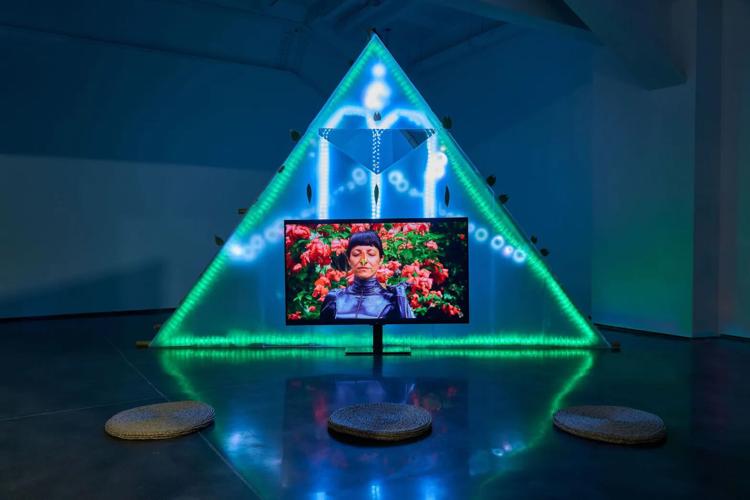
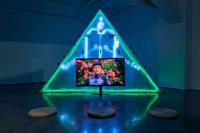

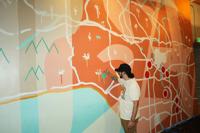



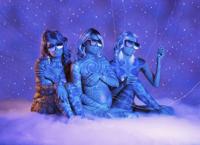

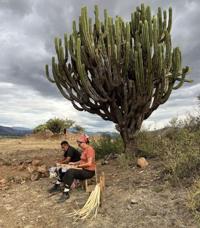


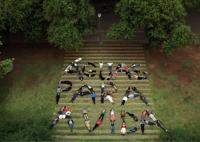

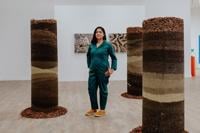



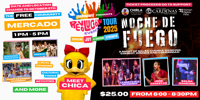

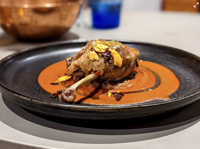


(0) comments
Welcome to the discussion.
Log In
Keep it Clean. Please avoid obscene, vulgar, lewd, racist or sexually-oriented language.
PLEASE TURN OFF YOUR CAPS LOCK.
Don't Threaten. Threats of harming another person will not be tolerated.
Be Truthful. Don't knowingly lie about anyone or anything.
Be Nice. No racism, sexism or any sort of -ism that is degrading to another person.
Be Proactive. Use the 'Report' link on each comment to let us know of abusive posts.
Share with Us. We'd love to hear eyewitness accounts, the history behind an article.